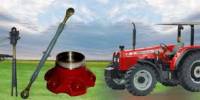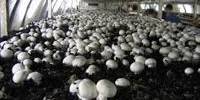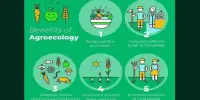An heirloom plant, heirloom variety, heritage fruit (Australia and New Zealand), or heirloom vegetable (especially in Ireland and the UK) is an open-pollinated cultivar that was commonly grown during earlier periods in human history, but which is not used in modern large-scale agriculture.
Where modern hybrid varieties are often bred for maximum yield, consistency, and long-distance shipping, heirlooms were typically grown for their ability to provide delicious food from our great grandparents’ gardens. That’s why many of us remember the first time we tasted a sun-kissed heirloom tomato straight from the backyard; especially if our earlier experiences had been the rubbery, out-of-season tomatoes from the store. All heirloom varieties have open-pollinated seeds that reproduce true-to-parent plants. This allows seeds to be harvested and saved for future generations to grow, unlike modern hybrid varieties. The four main sources of heirlooms:
- Families: Seeds passed along for generations by family members; typically 50 years or older.
- Commercial: Heirlooms acquired by seed companies and marketed to the public.
- Created: Specially created heirlooms that still have open-pollinated seeds, which can be saved and replanted. For instance, ‘Green Zebra’ tomato was bred from four heirlooms.
- Mystery: These are accidents of nature; created from natural cross-pollination.
In some parts of the world, it is illegal to sell seeds of cultivars that are not listed as approved for sale. The Henry Doubleday Research Association, now known as Garden Organic, responded to this legislation by setting up the Heritage Seed Library to preserve seeds of as many of the older cultivars as possible. However, seed banks alone have not been able to provide sufficient insurance against catastrophic loss. In some jurisdictions, like Colombia, laws have been proposed that would make seed saving itself illegal.
Many heirloom vegetables have kept their traits through open pollination, while fruit varieties such as apples have been propagated over the centuries through grafts and cuttings. The trend of growing heirloom plants in gardens has been returning in popularity in North America and Europe.
Since most popular heirloom plants are vegetables, the term heirloom vegetable is often used instead. Before the industrialization of agriculture, a much wider variety of plant foods was grown for human consumption. From the 16th century through the early 20th centuries, the diversity was huge. Old nursery catalogs were filled with plums, peaches, pears, and apples of numerous varieties and seed catalogs offered legions of vegetable varieties. Valuable and carefully selected seeds were sold and traded using these catalogs along with useful advice on cultivation. Since World War II, agriculture in the industrialized world has mostly consisted of food crops which are grown in large, monocultural plots. In order to maximize consistency, a few varieties of each type of crop are grown. These varieties are often selected for their productivity and their ability to ripen at the same time while withstanding mechanical picking and cross-country shipping, as well as their tolerance to drought, frost, or pesticides. This form of agriculture has led to a 75% drop in crop genetic diversity.
In modern agriculture in the Industrialized World, most food crops are now grown in large, monocultural plots owned by corporations. While heirloom gardening has maintained a niche community, in recent years it has seen a resurgence in response to the industrial agriculture trend. In the Global South, heirloom plants are still widely grown, for example, in the home gardens of South and Southeast Asia. Before World War II, the majority of the produce grown in the United States was heirlooms.
In the 21st century, numerous community groups all over the world are working to preserve historic varieties to make a wide variety of fruits, vegetables, herbs, and flowers available again to the home gardener, by renovating old orchards, sourcing historic fruit varieties, engaging in seed swaps, and encouraging community participation.
MaximumYield explains Heirloom Plant –
There’s a lot of discussions today about the benefits of heirloom plants, but it can be difficult to understand exactly what the word “heirloom” actually means. Really, it’s nothing more than a notation that the particular plant in question is an older cultivar, often dating back decades, or even centuries.
An heirloom plant may or may not be a genetic cross or a variety developed by a specific individual or company in the past. However, heirloom plants are distinct from hybrids in that they breed true to type, and are often localized to better withstand geographic-specific conditions like drought or mineral-depleted soils.
Heirlooms are chosen specifically by some farmers and gardeners because of the benefits they can often provide. For instance, many farmers cite that heirloom varieties have more flavor than conventionally grown vegetables and fruits. Heirloom plants are also open-pollinated, which means that insects or even the wind facilitate pollination with no outside help from humans needed.
Collection Sites and Future of Heirloom Plant –
The heritage fruit trees that exist today are clonally descended from trees of antiquity. Heirloom roses are sometimes collected (nondestructively as small cuttings) from vintage homes and from cemeteries, where they were once planted at gravesites by mourners and left undisturbed in the decades since. Modern production methods and the rise in population have largely supplanted this practice.
As the effects of climate change intensify and the world population rises, more attention is being put on heirloom plants as a way to restore genetic diversity and feed a growing population while safeguarding the food supply of diverse regions. Specific heirloom plants are often selected, saved, and planted again because of their superior performance in a particular locality. Over many crop cycles, these plants develop unique adaptive qualities to their environment which empowers local communities and can be vital to maintaining the genetic resources of the world.
However, an heirloom plant may suffer from problems that are not inherent with modern, hybrid plants. For instance, hybrids are prized for producing quickly, and for their consistency in terms of size and color. An heirloom plant may not produce fruits that are the same size, color, or even shape.
Information Sources:
















